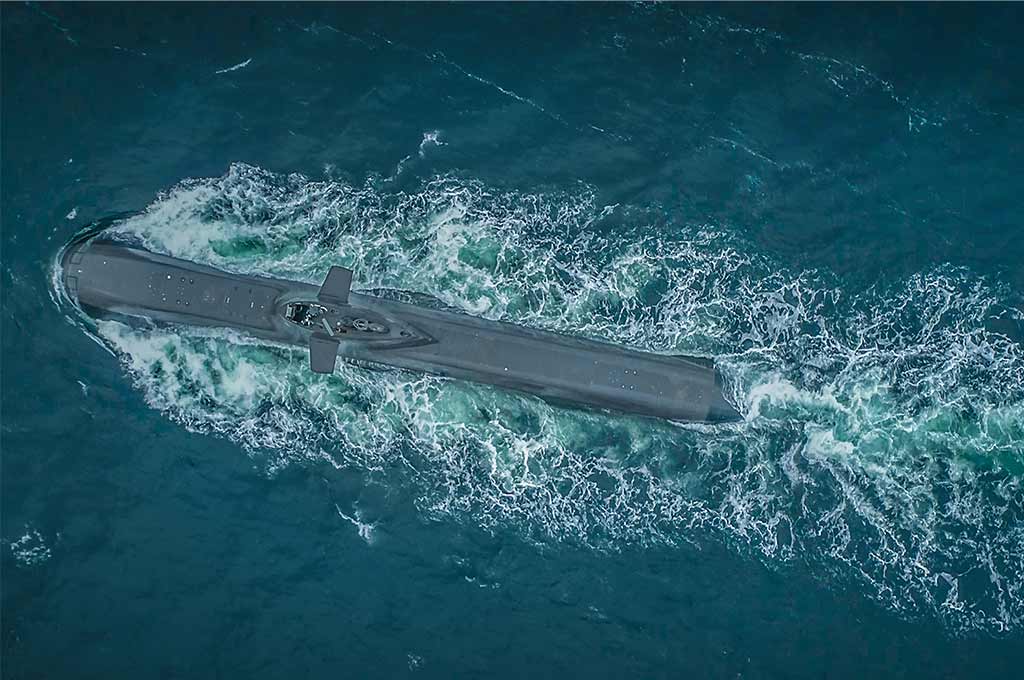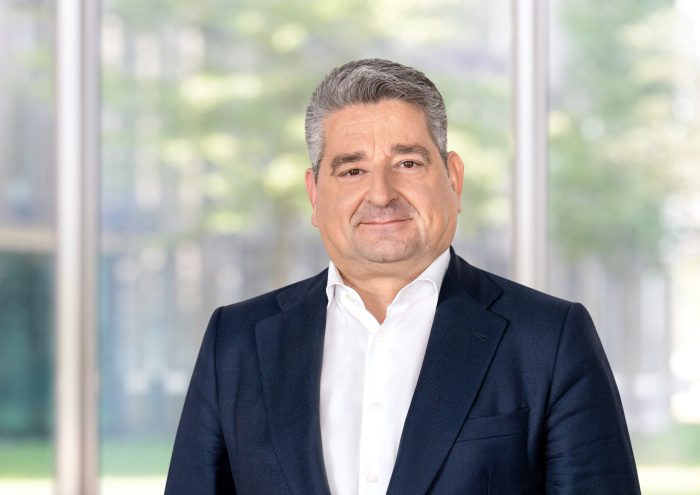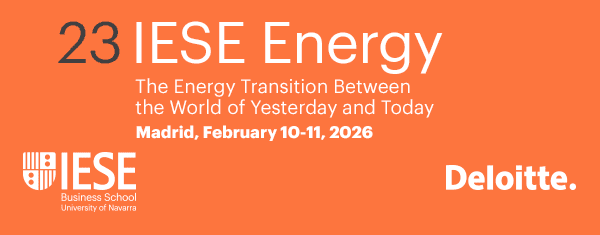
IESE Insight
Thyssenkrupp CEO sees future as green and marine, less steel
Miguel Angel Lopez Borrego aims to transform the German conglomerate, prioritizing sustainability and autonomy in energy and defense.
When Miguel Angel Lopez Borrego became CEO of Germany’s Thyssenkrupp in 2023, he came determined to transform the conglomerate into a leaner, more profitable and more sustainable organization by reducing its portfolio of companies and accelerating its green transformation.
It’s a bold vision for a company that’s the product of a merger between two centuries-old German corporations, symbols of the country’s postwar industrial expansion. Implementing that vision puts unique demands on a CEO, from negotiating with sometimes competing stakeholders while standing firm, to respecting the company’s historical legacy while building a very different future.
In the midst of all this, a new political climate in the U.S. is shaking up geopolitics, rewriting transatlantic relations, and a new German government is breaking new ground on debt and defense. Against this backdrop, Thyssenkrupp Steel Europe announced a comprehensive restructuring plan in November 2024 to make the steel division competitive again. The plan includes capacity adjustments, site closures, staff reductions and a focus on green, sustainable production. Another important milestone was reached in April 2025 when Thyssenkrupp Steel Europe terminated supply contracts with its joint venture company, Hüttenwerke Krupp Mannesmann (HKM). This move, along with the planned sale of its 50% stake in HKM, is intended to give clarity and transparency for both companies and their employees. Another major action is the separation of Thyssenkrupp’s marine business through a minority spinoff.
“This is all part of restoring confidence in the value of Thyssenkrupp,” Lopez explains. Here, the straight-talking CEO explains the different steps and qualities that are needed for making this transformation happen.

Miguel Angel Lopez Borrego, CEO of Thyssenkrupp, says, “Be transparent and decisive.”
What tips can you share from your negotiations for achieving win-wins with stakeholders?
The first thing is to be utterly transparent. It’s not telling people what they would like to hear. In every company, there will be legends — a mythology around how the company used to be and a belief that it can continue to be that way in the future. But you have to be transparent about the real situation. And the fact is, the steel business is making losses. Of course, people will debate why the company got into this situation in the first place. There will be some people who will listen to you, believe you and follow you, and there will be others who will listen but not support or follow you. It’s important not to be romantic about this. There will be some stakeholders whom you will never convince because it doesn’t suit their agenda. The question is: How do you deal with these people? You may be tempted to make compromises with them, but that would be a mistake, because you would be poisoning the company’s future development.
In sum, my advice is: transparency, information sharing, frank and honest debate, sorting out who is standing in which camp, and then not trying to find compromises with those who are not following your agenda, because that ultimately leads back to inefficiency, which is precisely what you are trying to avoid by entering into negotiation in the first place. This is when you need to be extremely calm but very, very decisive.
The effect of geopolitics on strategic decisions
What about also being agile in the sense of being able to respond quickly as the information landscape changes? How have recent geopolitical shifts influenced people’s thinking?
The complex, rapidly changing geopolitical situation makes it even more important to analyze the situation continuously and not jump to conclusions. Europe wanting to strengthen itself in terms of green transformation, digitalization, infrastructure and defense certainly offers great opportunities for our company, but there are also counter effects. Calls to maintain basic industries, such as steel, may slow down the necessary restructuring of the sector. That would certainly be wrong. Only a competitive steel industry can fulfill its role in Germany and Europe in the future. Moreover, you never know how the geopolitics will play out, which is why you have to be clear about your goals and stick with them. Adapting to long-term realities is an area where Europe really needs to do its homework, because our labor market, for example, is not very flexible.
Making the labor market more flexible will require policy changes. Do you find, as a CEO, you are having to engage more with policymakers in these areas?
The association representing German industries has written to the new German government to address the needs of the business community. I would like to think that the political parties can agree a shared agenda to drive the economy back to growth and be much more business-minded. We are also addressing these issues directly to the European Union, through our participation in the European Round Table for Industry, which includes CEOs and Chairs from around 60 of Europe’s largest companies in the industrial and technological sector to promote competitive, sustainable growth.
Business leaders need to be much more visible, and politicians need to put business and economic growth on the agenda much more than they have been doing so far. I see this type of engagement to be of growing importance. After all, our business strategies can only be executed in a context of favorable economic conditions; otherwise, our investments won’t be as successful.
How the CEO leadership role is changing
Besides engaging with policymakers, in what other ways do you see the CEO having to be more personally engaged?
At the level of leadership, I feel it’s important for the CEO to demonstrate commitment. Even before signing my contract as CEO of Thyssenkrupp, I purchased shares in the company to signal to the other shareholders the seriousness of my commitment and to show that I am convinced of this venture. Why should I expect others to commit if I am not willing to put my own private money into the company, too? We are in this together, going after the same goals. If you’re doing something that you say is going to be good for society, our people and the shareholders, then you need to put your money where your mouth is and be self-invested. This is private equity kind of thinking — of having a personal stake in seeing the venture succeed.
Which other leadership qualities are important?
I already mentioned transparency, which means being realistic with people and speaking the truth. Being agile. Alignment is also important. Every day our top management team has a call where we go over what happened during the day. This serves the purpose of being aligned, especially in such a difficult environment as now, ensuring that everyone is on board and committed to change.
Change is something that is easy to describe but complicated to achieve, because it’s about human behavior, right? And behavior is something that you learn in a tribe, behaving as the tribe behaves. You need to be decisive when implementing change, but also observant, identifying the people who want to change and those who can’t or won’t change. We need real, straight, honest talk, communicating as much as possible with my top management team, but also with other people in all areas of the organization.
The transition to a sustainable economy is irreversible
Regarding the green transformation pillar of your strategy, given current geopolitics, do you see the green agenda shifting, like we see some companies pulling back from prior ESG commitments?
Green transformation is a strong purpose of ours. The steel industry in Germany is responsible for around 7% of the country’s CO2 emissions, with Thyssenkrupp Steel Europe accounting for around 2.5% of that. That’s enormous, which is why we must decarbonize our steel production.
Shortly after joining the company in 2023, I created a decarb technologies business, both to decarbonize ourselves and to help customers decarbonize. We foresaw strong market growth in green molecules. What seemed like a fantasy market at the time is today a reality: we have real projects with real customers, partners and banks involved. The shift to a sustainable economy is no longer a question of if but a matter of how quickly we can scale to meet the demands of tomorrow’s world. Now, this growth may be less steep than expected, but our goal remains the same, regardless of the government and current conditions. The transition to a sustainable economy is irreversible.
Anyway, the current talk is all about autonomy in energy and defense. And that, for me, is clearly in line with our business goals. The hydrogen economy is the real opportunity in the long term — not to be dependent on oil and gas 20, 30 or 40 years from now. We need to convince people of the urgent need to build up the hydrogen economy in Europe. This means producing, developing and selling energy in Europe for Europeans, and being super competitive in green electrons. We must finally start thinking on a European scale, not on a national scale. Then we will have a realistic chance of making Europe largely energy-independent over the next 20 to 30 years. And we can do this at competitive prices, not through subsidies. We need to seize this tremendous opportunity.
You were recently at CERAWeek, the premier gathering of global energy leaders that takes place in Houston, Texas, every year. What’s the view from the U.S. on this?
I didn’t see anything in the U.S. changing this agenda. Certainly, there may be some market slowdown and prices will not go down as fast as they might have, but to be honest I came away from CERAWeek more inspired than ever. There is very strong talk about energy autonomy, which, as I’ve said, is also an opportunity for us in Europe. The other thing that struck me was the topic on everyone’s mind is artificial intelligence. Their feeling was that the U.S. is only one year ahead of China on AI, and they desperately don’t want to lose that race. It’s easy to think the Americans are crazy, but in reality, they are not crazy, they are following a clear agenda, and we need to understand that agenda.
AI and defense becoming strategic priorities
We see U.S. companies like Microsoft, Google and Amazon investing in energy generation to power their AI data centers. To what extent is AI part of your future strategy?
Without wanting to exaggerate, it’s fundamental — not as much as I would like, but it does play a role in different areas, such as the material services business where we do a lot of trading and transportation. We use a lot of data-driven services, automation and digitalization there, though we need to strengthen other areas, particularly in the use of robotics. The question for everyone is what the applications for all this AI should be.
Your marine spinoff includes non-nuclear submarines, where you are the world market leader as well as being the European leader for electronics and software in weapons systems, including torpedoes. With defense becoming a greater priority for Europe, do you see more AI applications in that space?
Defense will be one of the most important applications. In fact, most of the innovations of the world have originated from the defense industry. So AI will play a major role in innovation there, but the issue with defense applications is that they are not easily scalable. The bigger thing is finding applications in more scalable environments, generating new products and services. A drone used in combat is one thing, but it gets much more interesting when talking about flying cars, for example, which are not as many years away as we think.
MORE INFO: The business case study “Thyssenkrupp: Reinventing the German industrial giant” by Marta Elvira, Helmuth Ludwig and Jordan Mitchell is available from IESE Publishing. The case was the subject of Roland Berger’s 2025 MBA Case Competition, which has taken place at IESE Business School in Barcelona every year since 1995.
This interview originally appeared in the annual publication, Insight for Global Leaders No. 1 (2025).
15% off with the code INSIGHT15

